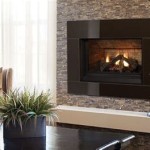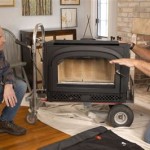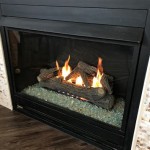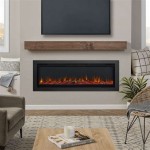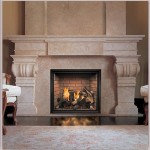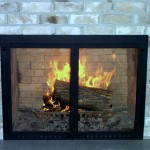Masonry Wood Burning Fireplaces: A Comprehensive Guide
Masonry wood-burning fireplaces represent a traditional heating and architectural feature found in many homes. Constructed from durable materials like brick, stone, or concrete block, these fireplaces offer both functional heating and aesthetic appeal. Understanding the components, construction, advantages, and maintenance requirements of a masonry fireplace is crucial for homeowners considering installation or those seeking to optimize an existing fireplace.
Unlike prefabricated metal fireplaces, masonry fireplaces are built on-site, allowing for customization and integration into the overall design of the home. Their robust construction and inherent thermal mass contribute to their unique heating characteristics and overall longevity. The following sections will delve into the key aspects of masonry fireplaces, providing a detailed overview of their construction, functionality, and best practices for safe and efficient operation.
Key Components of a Masonry Fireplace
A masonry fireplace is a complex structure comprised of several essential components working together to contain and exhaust combustion byproducts while radiating heat into the surrounding space. A clear understanding of these components is vital for proper operation and maintenance.
The
foundation
is the structural base of the entire fireplace, providing support and stability. It typically consists of a concrete slab extending below the frost line to prevent shifting due to ground movement. The foundation must be adequately sized to bear the considerable weight of the masonry structure.The
firebox
is the chamber where the fire is built. Its construction involves refractory brick or fireclay tiles, materials designed to withstand the extremely high temperatures generated during combustion. The firebox walls are typically sloped inward towards the back to improve heat reflection and combustion efficiency. The dimensions of the firebox are crucial for properDraft and airflow.The
hearth
is the non-combustible area directly in front of the firebox opening. It extends into the room and provides a safe landing zone for embers or sparks that may escape from the firebox. Hearth materials include brick, stone, or tile, chosen for their fire resistance and aesthetic appeal. Building codes dictate minimum hearth dimensions based on the size of the firebox opening.A
smoke chamber
is a tapered area above the firebox that funnels smoke and gases into the flue. The smooth interior surface of the smoke chamber improves draft and reduces turbulence, preventing backdrafting of smoke into the room. The angle of the smoke chamber walls is critical for efficient smoke removal.The
flue
is a vertical shaft that carries combustion gases and smoke from the smoke chamber to the outside atmosphere. It is typically constructed of fireclay tiles or a metal liner encased within the masonry chimney. The flue’s diameter must be appropriately sized to ensure adequate draft based on the dimensions of the firebox and the height of the chimney. Obstructions or damage to the flue can impede draft and create hazardous conditions.A
damper
is a movable plate located at the base of the flue above the smoke chamber. It controls airflow through the fireplace, preventing heat loss when the fireplace is not in use and regulating draft during operation. Dampers should be inspected regularly to ensure proper sealing and functionality. A rusted or damaged damper can significantly reduce energy efficiency.The
chimney
is the exterior masonry structure that encloses the flue. It extends above the roofline to provide adequate draft and disperse smoke away from the building. Chimneys are constructed to withstand weather exposure and must be periodically inspected for cracks, spalling, or other damage. A chimney cap placed on top of the chimney prevents rain, snow, and debris from entering the flue.Construction Considerations for Masonry Fireplaces
The construction of a masonry fireplace requires specialized skills and adherence to building codes to ensure structural integrity, safety, and efficient operation. Proper planning and execution are essential throughout the construction process.
Foundation Preparation:
The foundation must be properly designed and constructed to support the weight of the fireplace. Soil testing may be necessary to determine the load-bearing capacity of the ground. The concrete foundation should be reinforced with steel rebar and cured properly before construction begins.Firebox Construction:
The firebox is constructed using refractory brick or fireclay tiles laid in a heat-resistant mortar. The joints between the bricks must be carefully sealed to prevent gas leakage. The firebox dimensions should be designed according to established guidelines to ensure proper draft and combustion.Smoke Chamber Formation:
The smoke chamber requires careful shaping to ensure smooth airflow into the flue. The interior surfaces should be parged with a smooth coating of refractory mortar to reduce turbulence. The angle of the smoke chamber walls is critical for efficient smoke removal; an improperly designed smoke chamber can lead to backdrafting.Flue Installation:
The flue tiles or metal liner are carefully installed within the chimney structure, ensuring proper alignment and sealing. The flue must be insulated to maintain draft and prevent condensation. The size of the flue should be appropriately matched to the firebox dimensions to ensure adequate draft.Chimney Construction:
The chimney is constructed using brick, stone, or concrete block, with careful attention paid to structural stability and weather resistance. Mortar joints should be properly filled and sealed to prevent water penetration. The chimney should extend a minimum of three feet above the roofline and two feet higher than any structure within ten feet to ensure adequate draft.Damper Installation:
The damper is installed at the base of the flue, just above the smoke chamber. It must be properly aligned and sealed to prevent air leakage when closed. The damper mechanism should be easily accessible for operation and maintenance. Choosing the right modern airtight damper helps increase overall efficiency.Compliance with Building Codes:
All aspects of masonry fireplace construction must comply with local building codes and regulations. Obtaining the necessary permits and inspections is essential to ensure that the fireplace meets safety standards and is properly installed. Factors such as seismic requirements and fire safety regulations must be considered.Advantages and Disadvantages of Masonry Fireplaces
Masonry fireplaces offer several advantages over prefabricated metal fireplaces, including aesthetic appeal, thermal mass, and longevity. However, they also have certain disadvantages, such as higher construction costs and greater space requirements.
Aesthetic Appeal:
Masonry fireplaces can be customized to match the architectural style of the home. The use of brick, stone, or other decorative materials allows for a wide range of design options. A masonry fireplace can serve as a focal point in a room, adding warmth and character.Thermal Mass:
The masonry materials absorb and store heat from the fire, radiating it into the room long after the fire has died down. This thermal mass can contribute to improved energy efficiency and comfort. The slow release of heat provides a more even and consistent warmth compared to metal fireplaces.Longevity and Durability:
Properly constructed and maintained masonry fireplaces can last for many years. The durable materials are resistant to wear and tear, providing a long-term heating solution. The robust construction ensures structural stability and minimizes the risk of damage.Customization Options:
Masonry fireplaces can be designed to accommodate various features, such as built-in seating, storage alcoves, or decorative elements. The flexibility of on-site construction allows for unique and personalized designs.Higher Construction Costs:
Masonry fireplaces typically cost more to build than prefabricated metal fireplaces due to the labor-intensive construction process and the cost of materials. The complexity of the design and the need for specialized skills contribute to the higher cost.Space Requirements:
Masonry fireplaces require a larger footprint than metal fireplaces due to the thickness of the walls and the need for a substantial foundation. The space occupied by the fireplace can be a significant consideration, particularly in smaller homes.Slower Heat-Up Time:
Due to the thermal mass of the masonry materials, it takes longer for a masonry fireplace to start radiating heat compared to a metal fireplace. This can be a disadvantage when quick heating is desired.Maintenance Requirements:
Masonry fireplaces require regular maintenance, including chimney sweeping, damper inspection, and mortar joint repair. Neglecting maintenance can lead to safety hazards and reduced efficiency.Ultimately, the choice between a masonry fireplace and a prefabricated metal fireplace depends on individual preferences, budget constraints, and the specific needs of the homeowner. Carefully weighing the advantages and disadvantages of each option is crucial for making an informed decision.
Proper operation involves several key practices. Only seasoned, dry firewood should be used to ensure efficient combustion and minimize smoke production. Excessively wet or green wood can create creosote buildup in the flue, increasing the risk of chimney fires. The fire should be built according to recommended techniques, allowing for adequate airflow and efficient burning. Overloading the firebox with wood can create excessive heat and potentially damage the fireplace structure. The damper should be fully opened before lighting the fire and adjusted as needed to control draft. However, the damper should never be completely closed while embers are still present. Regular inspection and cleaning of the fireplace and chimney are vital for safe and efficient operation.

Temp Cast Llc

Outdoor Wood Burning 36 Fireplace With Masonry Custom Interior Liners By Superior Wre6000 Wre6036 F4222

Exterior Air For A Masonry Wood Burning Fireplace Jlc

Temp Cast Indoor Masonry Fireplace And Oven Combo Patio Outdoor Furnishings

Temp Cast Masonry Heater Friendly Fires

Mason Lite Indoor Outdoor Wood Burning Fireplace Kit Patio Furnishings

Superior 50 Inch Masonry Wood Burning Fireplace Wrt6050

50 Inch Real Masonry Wood Burning Fireplace

The Masonry Heater Association Mha Website

Superior 48 Inch Masonry Wood Burning Fireplace Wrt8048
Related Posts

